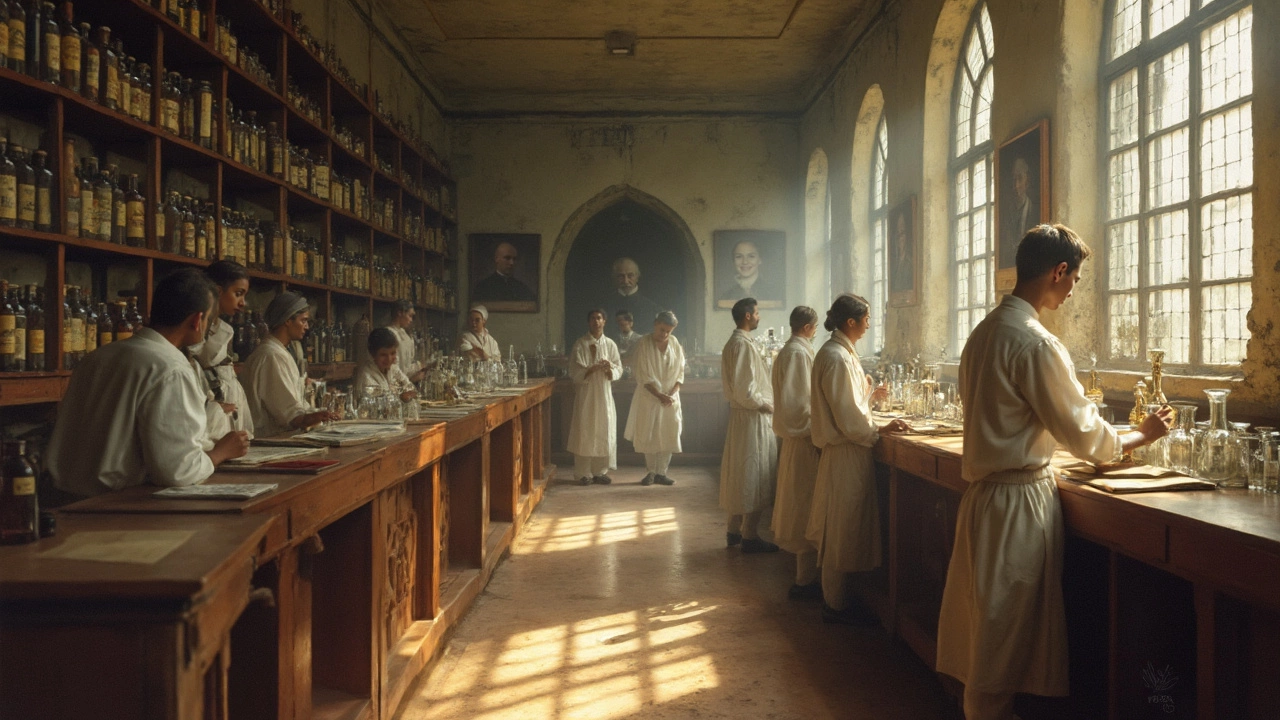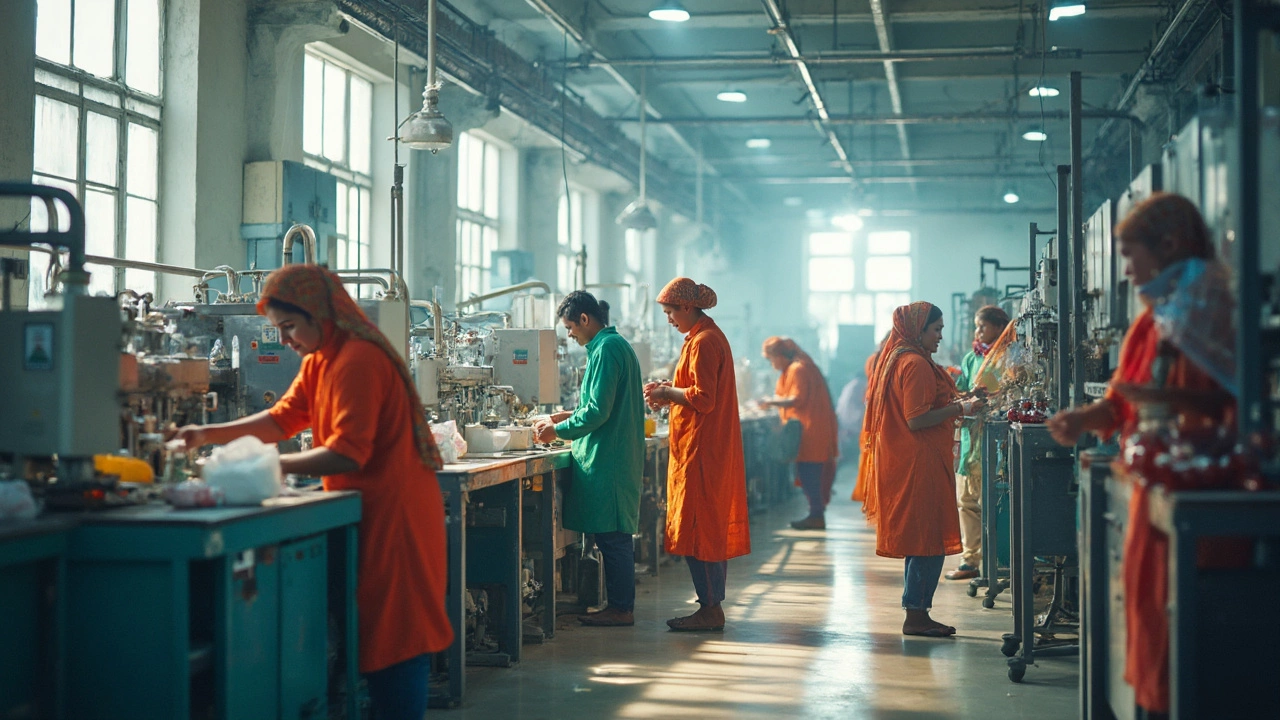Pharmaceutical Manufacturing: Trends, Leaders, and Cost Dynamics
When exploring pharmaceutical manufacturing, the large‑scale creation of medicines, from active ingredient synthesis to final packaging. Also known as drug production, it drives health outcomes worldwide and fuels a multi‑billion‑dollar economy. In India, the sector thrives thanks to low‑cost production, a skilled workforce, and policies that encourage generic development. Pharma industry leaders, companies that dominate global sales and R&D investment set quality benchmarks that ripple through every supplier. Drug pricing in India, a mix of regulatory caps, intense generic competition, and local manufacturing efficiencies creates a price gap that many patients abroad notice. Across the Pacific, US pharma distributors, the three giants that control most of the American drug supply chain dictate which Indian products reach pharmacies, influencing export volumes and profitability. In short, pharmaceutical manufacturing encompasses drug pricing strategies, pharma industry leaders influence global supply chains, and US pharma distributors shape market access for Indian manufacturers.
Key Players and Emerging Forces
India’s oldest drug house, Bengal Chemicals, still echoes in today’s factories, proving that legacy can coexist with cutting‑edge biotech. Modern giants like Sun Pharma and Dr. Reddy’s expand the definition of manufacturing by integrating continuous flow reactors and AI‑driven quality checks. Meanwhile, a new generation of leaders—women executives who broke glass ceilings—are steering companies toward greener processes and broader export markets. Their stories illustrate that gender diversity isn’t just a buzzword; it drives innovation in formulation stability and sustainable waste handling. Women in pharma, executives who champion R&D, regulatory compliance, and eco‑friendly plant design are reshaping boardrooms and factory floors alike. Cost dynamics remain a hot topic. While Western patients often face high retail prices, Indian consumers benefit from a supply chain that skips many middlemen. Government price caps, bulk raw‑material sourcing, and a culture of incremental process improvement keep pills affordable. At the same time, the rise of biologics and personalized medicine pushes manufacturers to adopt single‑use bioreactors and advanced analytics, raising capital requirements but opening premium market segments. The tension between low‑cost volume production and high‑value specialty drugs creates a strategic crossroads for any plant manager.
All these threads—historic roots, global leaders, pricing mechanics, distribution networks, and the growing influence of women—converge in the articles below. Whether you’re a student, a supply‑chain analyst, or a startup founder, the collection offers concrete examples, data‑backed explanations, and actionable takeaways that will help you navigate the fast‑changing world of pharmaceutical manufacturing.
Top Pharmaceutical Producing Countries and Global Pharma Industry Leaders
Explore which country is the largest producer of pharmaceuticals, how global pharma production works, and what sets industry leaders apart today.
Oldest Pharma Company in India: How Bengal Chemicals Shaped the Industry
Curious about which company started it all in India's pharma scene? This article digs into the roots of the oldest pharmaceutical company in India, sharing surprising facts and tracing its influence. Discover how Bengal Chemicals kickstarted an entire industry, outlasting competitors and surviving turbulence through the decades. The story isn’t just about old medicines – it’s about resilience, big ideas, and how Indian pharma grew from one local lab to a global force. Even if you’re not a pharma buff, you’ll see why this company’s journey feels almost like folklore.
Why Are Drugs Cheaper in India? Unpacking the Cost Difference
In India, the cost of drugs is noticeably lower than in many other countries. A combination of factors including local manufacturing, a competitive market, and government regulations contribute to this price difference. Understanding these elements can provide insights into the global pharmaceutical industry's dynamics. Explore how India achieves affordable drug pricing and what makes its pharmaceutical industry unique.
Big 3 Pharma Distributors in the USA: A Comprehensive Insight
In the vast landscape of pharmaceuticals, three major distributors dominate the U.S. market, playing an integral role in the supply chain. These organizations not only facilitate the distribution of medicines but also impact global markets, including Indian pharma manufacturers. Understanding their operations can reveal insights into the implications for international stakeholders and the overall pharmaceutical industry dynamics.
The Rise of India's Pharma Queen: Navigating the Industry's Future
India's pharmaceutical industry has seen exponential growth, with several visionary leaders steering companies towards international prominence. Among these leaders is a woman who stands out for her contributions and business acumen, earning the title of the 'Pharma Queen of India.' This article delves into her journey, exploring her impact on the sector and shedding light on the challenges she faced. By examining her strategies and accomplishments, readers can gain insights into the rapidly evolving world of Indian pharmaceuticals and the pivotal role women play in it.
- manufacturing
- India
- food processing
- garden tips
- rice cultivation
- government schemes
- balcony garden
- urban gardening
- balcony gardening
- profitable business
- business ideas
- plastic manufacturing
- drip irrigation
- plant care
- steel manufacturing
- sustainable gardening
- startup ideas
- steel industry
- flower gardening
- textile manufacturers










